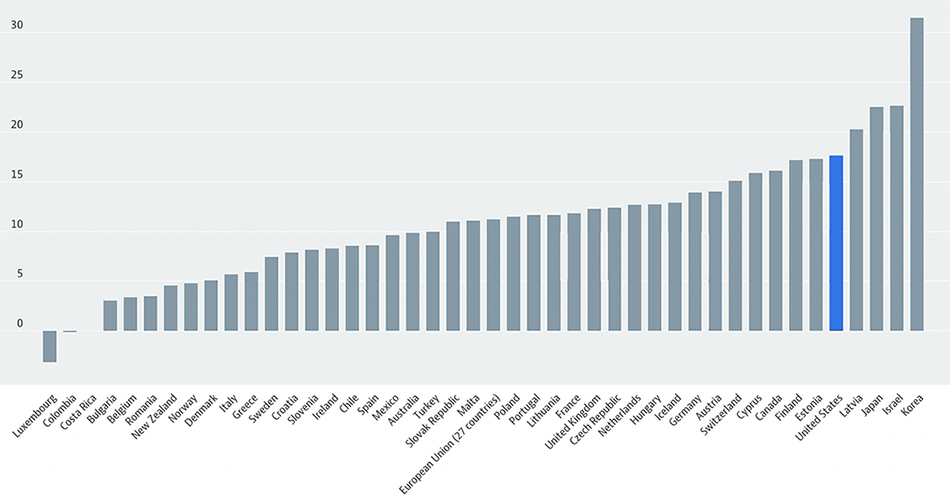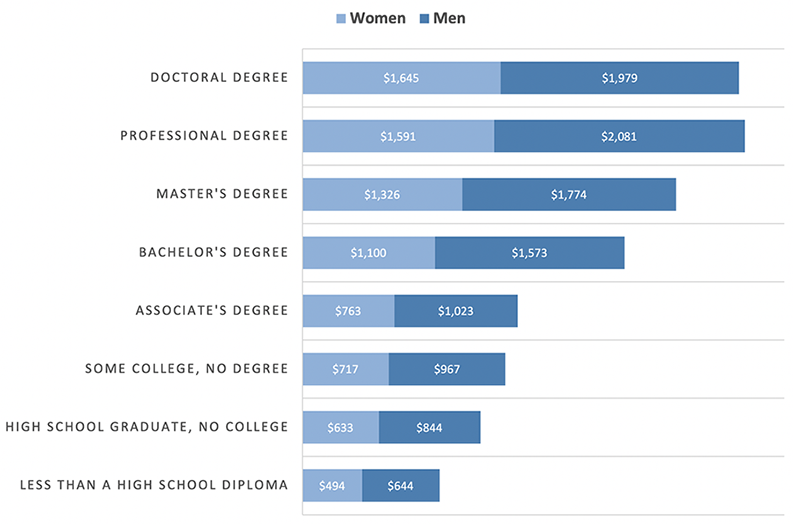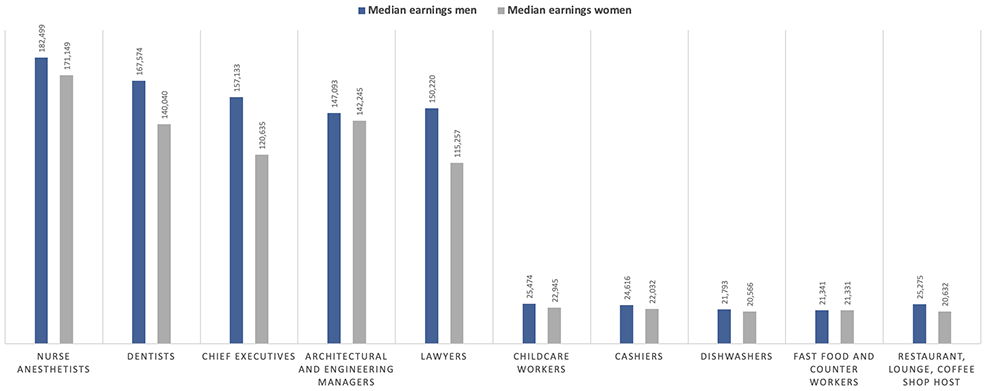Women worldwide are paid less for their labor
The United States has among the highest gender wage gaps in the world. A common misbelief is that pay inequality is a problem unique to developing economies. The data tells us otherwise.
Gender wage gaps as a percentage, 2020 or latest available to OECD
Source: OECD
Notes: The gender wage gap is defined as the difference between median earnings of men and women relative to median earnings of men. Data refers to full-time employees.
Women in every U.S. state experience pay inequity
The gender wage gap is not bound by cultural, political, or even geographical landscape. This heatmap of U.S. states shows us income inequality by gender is ubiquitous across the country.
Women's earnings as a percentage of men by state, 2020
Source: U.S. Bureau of Labor Statistics
Women across all levels of educational attainment experience pay inequity
There is often an assumption that women who are being paid less than men must not be as educated. The data shows us quite the opposite. Gender wage gaps widen as educational attainment advances.
Median weekly earnings of full-time wage and salary workers, 25 years and older, by educational attainment and gender, 2019 annual averages
Source: U.S. Bureau of Labor Statistics
Women are paid less than men in even the highest-paid occupations
Some argue that pay inequity is caused by an overrepresentation of women in low-wage and caretaking occupations. However, even in the highest-paid roles, the gender wage gap persists.
Median annual earnings of full-time workers by occupation, US Census Bureau 2019
Source: U.S. Department of Labor Statistics
Notes: There is in fact a statistical overrepresentation of women in low-wage and caretaking occupations overall. However, this is more indicative of limited economic opportunities and the "glass ceiling" as referred to more colloquially.


